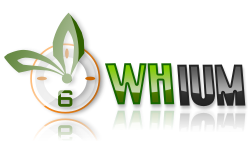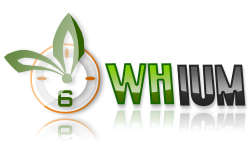
Are you interested in flowers and looking for a creative way to enhance your education? Look no further! In this article, we will guide you through the process of making a flower-themed book or magazine that will not only educate you but also ignite your creativity. Whether you are a student or a teacher, this step-by-step guide will provide you with all the instructions and innovative ideas you need to create your very own educational publication centered around the beauty of flowers.
By following the tips and techniques shared in this article, you will be able to design a captivating flower book or magazine that is both informative and visually appealing. From choosing the perfect theme to gathering accurate information, from designing engaging layouts to selecting interactive elements, we have got you covered. Let’s dive into the exciting world of flower education and create a publication that will leave a lasting impression on your readers.
Choosing a Theme
Selecting a theme for your flower book or magazine is crucial. It sets the tone and direction for your educational publication. When choosing a theme, consider the interests and preferences of your target audience. Here are some themes that can be explored in your flower-themed publication:
- Different Types of Flowers: Dive into the world of flowers by exploring the various types, colors, and characteristics of different flowers. This theme allows readers to learn about the diversity and beauty of flowers.
- Flower Symbolism: Flowers have been used to convey emotions and messages for centuries. Explore the symbolism behind different flowers and their meanings. This theme adds depth and significance to your publication.
- Flower Habitats: Take your readers on a journey through different flower habitats, such as gardens, meadows, or rainforests. Discuss the unique ecosystems and environments where flowers thrive. This theme provides a holistic understanding of flowers in their natural settings.
By selecting a theme that resonates with your audience, you can create a captivating and educational flower book or magazine. Remember to choose a theme that aligns with your objectives and the educational goals you want to achieve.
Gathering Information
To create an educational flower book or magazine, it is essential to have accurate and interesting information about flowers. This subheading will guide you on how to research and gather relevant facts, details, and images to make your publication informative and engaging.
1. Start by identifying reliable sources of information about flowers. Look for reputable books, scientific journals, and online resources that provide accurate and up-to-date information.
2. Make a list of specific topics or aspects of flowers that you want to cover in your book or magazine. This could include flower anatomy, life cycle, symbolism, or popular flower species.
3. Conduct thorough research on each topic, taking notes of important facts, statistics, and interesting details. Use a combination of primary and secondary sources to gather comprehensive information.
4. When gathering images, ensure they are high-quality and relevant to the content. You can take your own photographs, use royalty-free images, or seek permission to use copyrighted images.
5. Organize the information and images in a systematic manner. Create an outline or storyboard to plan the flow of content in your flower book or magazine.
By following these steps, you will be able to gather the necessary information and visuals to create an educational publication that captivates readers and enhances their knowledge about flowers.
Designing Layout and Structure
An appealing layout and structure are essential for an educational publication. When creating a flower book or magazine, it is important to organize the content in a way that is visually engaging and easy to navigate. Here are some tips to help you design the layout and structure of your publication:
- Plan the flow of information: Start by outlining the main sections and chapters of your flower book or magazine. This will help you organize the content and ensure a logical progression of information.
- Use headings and subheadings: Break your content into smaller sections and use descriptive headings and subheadings. This will make it easier for readers to find the information they are looking for.
- Create a consistent design: Choose a color scheme, fonts, and formatting styles that are consistent throughout your publication. This will give your flower book or magazine a cohesive and professional look.
- Incorporate visuals: Include high-quality images, illustrations, and diagrams that complement the content. Visual elements not only make your publication more visually appealing but also help to reinforce the educational material.
- Consider white space: Don’t overcrowd your pages with text and images. Leave enough white space to give your publication a clean and uncluttered look.
- Experiment with different layouts: Try out different page layouts to see what works best for your content. You can use columns, grids, or even asymmetrical designs to add visual interest.
By following these tips, you can create a well-structured and visually appealing flower book or magazine that enhances the educational experience for your readers.
Including Interactive Elements
To make your flower book or magazine more interactive, consider adding activities, quizzes, or puzzles. These interactive elements not only engage your readers but also enhance the educational value of your publication. Here are some creative ways to incorporate interactivity into your flower-themed book or magazine:
- Create a flower identification quiz where readers can test their knowledge of different types of flowers.
- Include a crossword puzzle or word search related to flower terminology or botanical terms.
- Add a DIY flower arrangement activity with step-by-step instructions and accompanying images.
- Integrate a coloring section where readers can color in different types of flowers and learn about their unique characteristics.
- Incorporate interactive QR codes that lead readers to additional online resources, videos, or virtual tours of famous flower gardens.
- Design a cut-out template for readers to create their own paper flowers, allowing them to explore the art of origami.
By including these interactive elements, you create a dynamic and engaging experience for your readers. They not only learn about flowers but also get to actively participate in the learning process. Remember to strike a balance between educational content and interactive elements to ensure that your publication remains informative and enjoyable.
Choosing the Right Format
Selecting the appropriate format for your flower book or magazine is crucial. There are different options to consider, such as print, digital, or a combination of both. Each format has its own benefits and considerations that can impact the overall success of your educational publication.
Print format offers a tangible and physical experience for readers. It allows them to flip through pages, feel the paper, and appreciate the visual elements in a traditional way. Print publications can be distributed in schools, libraries, or sold in bookstores. However, printing costs and distribution logistics should be taken into account.
On the other hand, digital format provides accessibility and convenience. It allows readers to access your flower book or magazine on various devices such as computers, tablets, or smartphones. Digital publications can be easily shared through email or social media platforms, reaching a wider audience. However, digital formats may require technical skills for design and formatting, and there may be limitations on offline access.
Alternatively, you can consider a combination of both print and digital formats. This allows you to cater to different preferences and reach a wider audience. You can offer a printed version for those who prefer a physical copy, while also providing a digital version for easy access and distribution. However, managing both formats may require additional resources and coordination.
Ultimately, the choice of format depends on your target audience, budget, distribution strategy, and desired user experience. Consider your goals and resources carefully to make an informed decision that aligns with the educational value and reach of your flower book or magazine.
Writing Engaging Content
Compelling content is key to a successful flower book or magazine. When writing articles, captions, and descriptions for your publication, it is important to educate and captivate your readers. Here are some tips to help you create engaging content:
- Start with a captivating introduction that grabs the reader’s attention. Use descriptive language and intriguing facts to pique their curiosity.
- Use storytelling techniques to make your content more interesting. Share personal anecdotes or narratives that relate to the topic of flowers.
- Include relevant and accurate information about different types of flowers, their characteristics, and their significance.
- Make your content visually appealing by incorporating high-quality images that complement the text. Use descriptive captions to provide additional information about the images.
- Break up your content into smaller paragraphs or sections to make it easier to read and digest. Use subheadings to organize the information and guide the reader through the content.
- Engage your readers by asking rhetorical questions or encouraging them to think about the topic. This can create a sense of interaction and make the content more thought-provoking.
- Include interesting facts, trivia, or fun activities related to flowers. This can make the content more interactive and enjoyable for the readers.
- End your articles, captions, and descriptions with a strong conclusion that summarizes the main points and leaves a lasting impression on the reader.
By following these tips, you can create content that not only educates but also captivates your readers, making your flower book or magazine a valuable educational resource.
Designing Eye-Catching Covers
The cover of your flower book or magazine plays a crucial role in grabbing the attention of your readers. It serves as the first impression and should be visually appealing and representative of the content inside. This section will provide you with design ideas and techniques to create eye-catching covers that will entice readers to pick up your publication.
To design an eye-catching cover, consider the following:
- Choose a captivating image or illustration that relates to the theme of your flower book or magazine. It could be a close-up of a beautiful flower, a vibrant floral arrangement, or an artistic interpretation of flowers.
- Use bold and attractive typography for the title and subtitle of your publication. Experiment with different fonts, sizes, and colors to find a combination that stands out.
- Incorporate elements of nature and flowers into the design, such as floral patterns, leaves, or petals. These elements can add a sense of beauty and elegance to your cover.
- Consider adding a touch of creativity by using special printing techniques like embossing, foil stamping, or spot UV coating. These techniques can give your cover a tactile and luxurious feel.
Remember to keep the design clean and uncluttered, allowing the main elements to shine. A visually striking cover will not only attract readers but also convey the quality and professionalism of your educational publication.
Choosing the Right Images
Selecting the right images is crucial for a flower-themed publication. The images you choose should not only be visually appealing but also enhance the educational content of your book or magazine. Here are some tips on how to choose high-quality, relevant images:
- Relevance: Ensure that the images you select are directly related to the topic of flowers and align with the content of your publication. For example, if you are discussing different types of flowers, include images that showcase these specific flowers.
- Quality: Use high-resolution images that are clear and well-lit. Blurry or pixelated images can detract from the overall visual appeal of your publication.
- Authenticity: Consider using original images or ones that are copyright-free to avoid any legal issues. If you are using stock photos, choose ones that look natural and authentic.
- Diversity: Include a variety of images to keep your readers engaged. Show different angles, colors, and stages of flower growth to provide a comprehensive view.
- Emotional Appeal: Select images that evoke emotions and create a connection with your readers. Images that capture the beauty and delicacy of flowers can help create a captivating visual experience.
By carefully choosing the right images, you can enhance the educational content and overall visual appeal of your flower book or magazine, making it more engaging and impactful for your readers.
Printing and Publishing
Once your flower book or magazine is complete, it’s time to consider printing and publishing options. This section will guide you through the different printing methods, self-publishing platforms, and distribution channels that can bring your educational publication to life.
Printing Methods:
When it comes to printing your flower book or magazine, you have several options to choose from. Here are a few popular methods:
- Offset Printing: This traditional printing method is ideal for large print runs and offers high-quality results. It involves transferring ink from a plate to a rubber blanket before being applied to the paper.
- Digital Printing: If you’re looking for flexibility and quick turnaround times, digital printing is a great choice. It allows for on-demand printing, making it suitable for smaller print quantities.
- Print-on-Demand: With print-on-demand services, you can have your flower book or magazine printed as and when orders are placed. This eliminates the need for upfront printing costs and storage.
Self-Publishing Platforms:
If you prefer to take control of the publishing process, self-publishing platforms can be a fantastic option. These platforms provide tools and resources for you to design, format, and publish your educational publication. Some popular self-publishing platforms include:
- Amazon Kindle Direct Publishing (KDP): KDP allows you to publish your flower book or magazine as an eBook and make it available to millions of readers on Kindle devices and apps.
- Blurb: Blurb offers both print-on-demand and eBook publishing options. It provides customizable templates and an easy-to-use interface for creating professional-looking publications.
- Lulu: Lulu is another self-publishing platform that offers a range of printing and distribution services. It allows you to sell your flower book or magazine in print and eBook formats.
Distribution Channels:
Once your flower book or magazine is printed or published digitally, you’ll need to consider distribution channels to reach your target audience. Here are a few distribution options:
- Online Marketplaces: Platforms like Amazon, Barnes & Noble, and eBay provide opportunities to sell your educational publication online, reaching a wide audience of potential readers.
- Social Media: Utilize social media platforms such as Facebook, Instagram, and Twitter to promote and sell your flower book or magazine directly to your followers and engage with your audience.
- Local Bookstores and Libraries: Approach local bookstores and libraries to see if they are interested in carrying your educational publication. This can help you reach readers in your community.
By exploring different printing methods, self-publishing platforms, and distribution channels, you can effectively bring your flower book or magazine to the hands of eager readers, enriching their educational experience with the world of flowers.
Frequently Asked Questions
- Q: How do I choose a theme for my flower book or magazine?
- Q: How can I gather accurate and interesting information about flowers?
- Q: What should I consider when designing the layout and structure of my flower book or magazine?
- Q: How can I make my flower book or magazine more interactive?
- Q: What format should I choose for my flower book or magazine?
- Q: How can I write engaging content for my flower book or magazine?
- Q: What should I keep in mind when designing the cover of my flower book or magazine?
- Q: How do I choose the right images for my flower-themed publication?
- Q: What options do I have for printing and publishing my flower book or magazine?
A: When selecting a theme, consider different types of flowers, flower symbolism, or flower habitats. Choose a theme that interests you and aligns with your educational goals.
A: Research various sources such as books, websites, and botanical gardens. Collect facts, details, and images that are relevant to your chosen theme. Ensure the information is reliable and up-to-date.
A: Organize your content in a logical manner, with clear sections and headings. Use visually engaging elements such as images, diagrams, and infographics. Consider the flow of information and how readers will navigate through the publication.
A: Incorporate activities, quizzes, or puzzles related to flowers. Encourage readers to actively engage with the content and test their knowledge. This interactive approach enhances the educational value of your publication.
A: Consider the advantages and considerations of print, digital, or a combination of both. Print offers a tangible experience, while digital allows for interactivity and wider distribution. Choose the format that best suits your target audience and goals.
A: Use descriptive language, storytelling techniques, and personal anecdotes to captivate readers. Focus on providing educational value while maintaining an engaging tone. Incorporate captivating headlines and subheadings to grab attention.
A: Create a visually appealing cover that reflects the essence of your publication. Use vibrant colors, captivating images, and relevant typography. Ensure the cover accurately represents the content inside.
A: Select high-quality images that are relevant to your content. Choose photos that showcase the beauty of flowers, their different varieties, and their unique features. Ensure the images enhance the educational value of your book or magazine.
A: Explore different printing methods such as offset printing or print-on-demand services. Consider self-publishing platforms for digital versions. Research distribution channels to reach your target audience effectively.

